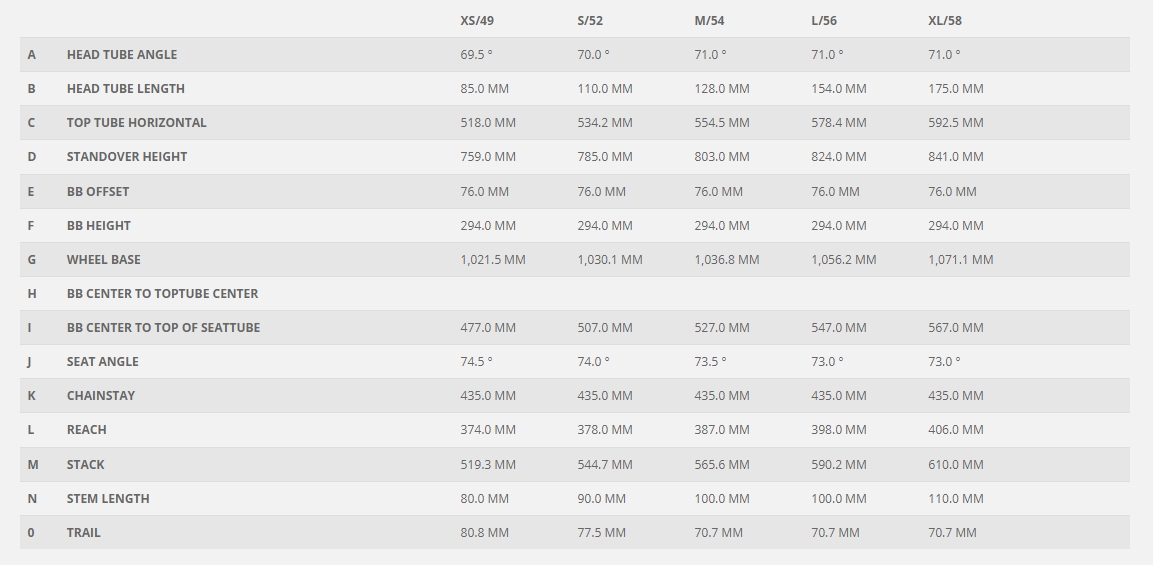Scott Solace Gravel eRide
Wheel Size: 700c
Travel: Rigid
Geometry Highlights:
- Sizes offered: S, M, L, XL
- Headtube angle: 71°
- Seat tube angle: 73.5
- Reach: 398 mm (size 56 cm)
- Chainstay length: 435 mm
Drive System Highlights:
- Motor: TQ HPR 50
- Torque: 50 Nm
- Power: 300 W
- Battery: 360 Wh
- Display: TQ Integrated top tube
- Remote: None
Frame Material: Carbon Fiber
Price: Complete bikes: $5,999 to $9,999
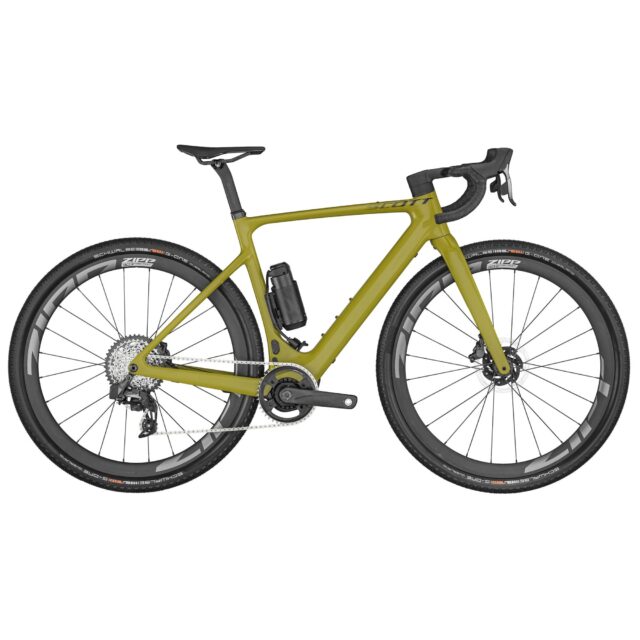
Intro
If someone asks me what Road bike I recommend, my answer is often a Gravel bike. With an extra set of wheels set up with road tires, a Gravel bike can essentially be two bikes in one. Road race bikes still have their place, of course, but a Gravel bike is vastly more versatile for most folks.
Scott appears to agree, as they’ve now added a Solace Gravel eRIDE alongside the Road-focused Solace eRIDE, equipped with the TQ HPR50 drive system. Both models share the same frame, with tires and other spec choices making up for the difference in intention; we’re going to focus on the Solace Gravel eRIDE here. With a sub–30 lb weight, the Solace Gravel eRIDE manages to be lightweight with a host of features that look quite compelling in the growing adventure eGravel category. Let’s get into the details.
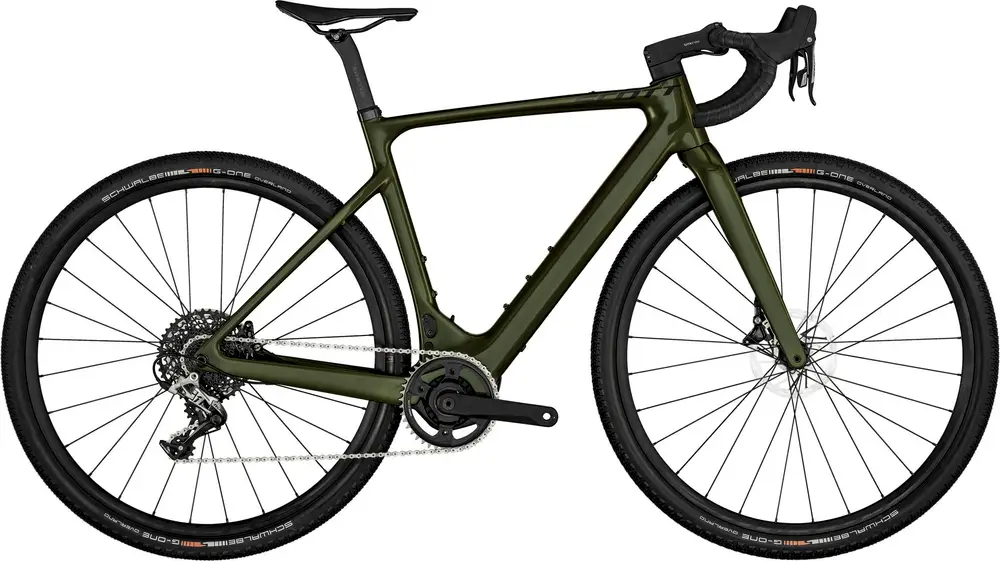
The Frame
Scott took their highly regarded Addict frame and used it as the foundation for the Solace Gravel eRIDE, including the same HMX carbon construction. Integrating the TQ HPR 50 drive system meant opening up the bottom bracket area to mount the motor, and reworking the downtube to accommodate the battery. Despite all this, Scott claims they’ve achieved very similar frame stiffness to the Addict.
The frame has mounts for fenders and two water bottles; the optional range extender (more on that below) takes the place of one bottle. Interestingly, Scott has integrated kickstand mounts to the underside of the non-drive side chainstay. Kickstands aren’t that common on Gravel or Road bikes, but do make sense when loaded up for bikepacking.
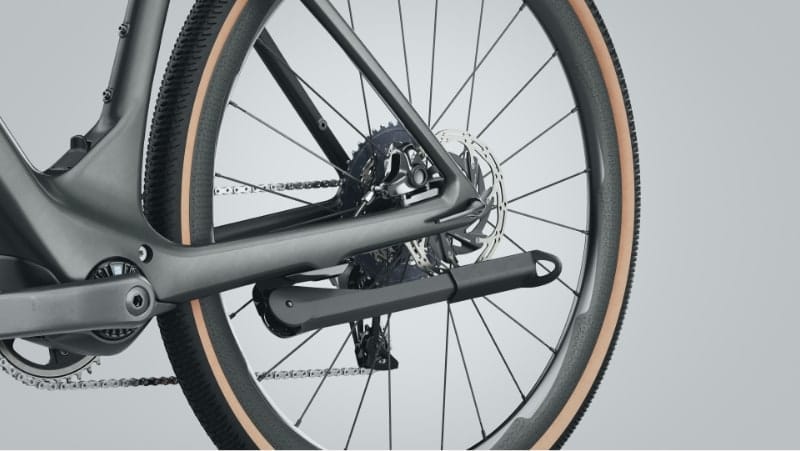
The Solace Gravel eRIDE uses a SRAM UDH derailleur hanger, which should make sourcing a replacement quite easy if needed. On the non-drive side, Scott has integrated the TQ speed sensor almost invisibly into the dropout, with the magnet mounted to the centerlock brake disc lockring.
Scott has incorporated internal headset cable routing on the Solace Gravel eRIDE. It’s no secret that we’re not fans of internal headset cable routing here at Blister, but that’s based mostly on our experiences with mountain bikes. While it still makes brake and housing services a pain, drop bar bikes can be a bit of a different story, where cables run under the bar tape and can funnel directly into the headset under the stem, creating a very clean cable-less aesthetic. Drop bar bikes tend to require a bit less mechanical love than mountain bikes so it could prove to be a clean routing solution without too many headaches, but we’ll have to wait until we get one to fully weigh in.
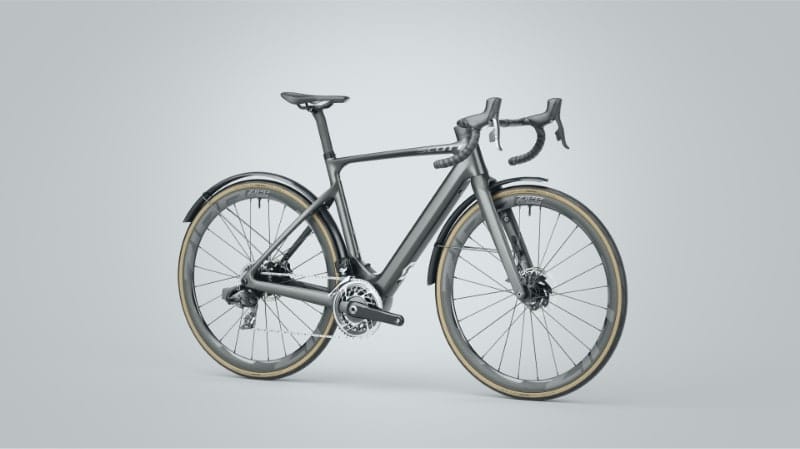
Fit & Geometry
Scott offers the Solace Gravel eRIDE in five sizes; 49 (XS), 52 (S), 54 (M), 56 (L), and 58 cm (XL). Scott uses both numerical and MTB-style nominal sizing, with the goal of making their sizing easier to decipher for both Road and Mountain enthusiasts. Much of the geometry is similar to the Addict, but Scott made a few tweaks to give the Solace a more stable ride. Most notably, Scott added 10 mm to the Solace Gravel eRIDE’s chainstays, the idea being to improve the fore / aft weight distribution that has been affected by the weight of the drive system and battery.
Overall, the Solace Gravel eRIDE’s geometry is in line with what we’re seeing in modern Gravel bikes taking cues from a more traditional Road-derived philosophy. Gravel bikes like the Santa Cruz Stigmata and Evil Chamois Hagar incorporate a bit of Mountain Bike geometry and come across as more progressive, but can be a step too far in the eyes of some folks coming from a Road background.
Drive System
Scott has partnered with TQ for the drive system in the Solace Gravel eRIDE. The HPR50 is rated at 50 Nm of torque, with 300 watts of power, and a 360 Wh battery. The claimed weight of the motor is 1,850 grams, and combined with the 1,830-gram battery is one of the lighter drive systems available. We go into detail on the HPR50 drive system, and specifically the unique “Harmonic Pin Ring” reduction system in the Trek Fuel EXe First Look.
The Solace Gravel eRIDE uses TQ’s integrated top tube display, which provides battery life percentage, distance, speed, assist mode, and rider / motor power output. The Solace Gravel eRIDE does not use the TQ remote since that is more appropriate for flat bar applications . The display can handle all the same functions as the remote, it just requires taking a hand off the bars to push the display’s button. The display also has ANT+ capabilities for connectivity with cycling computers and other devices.
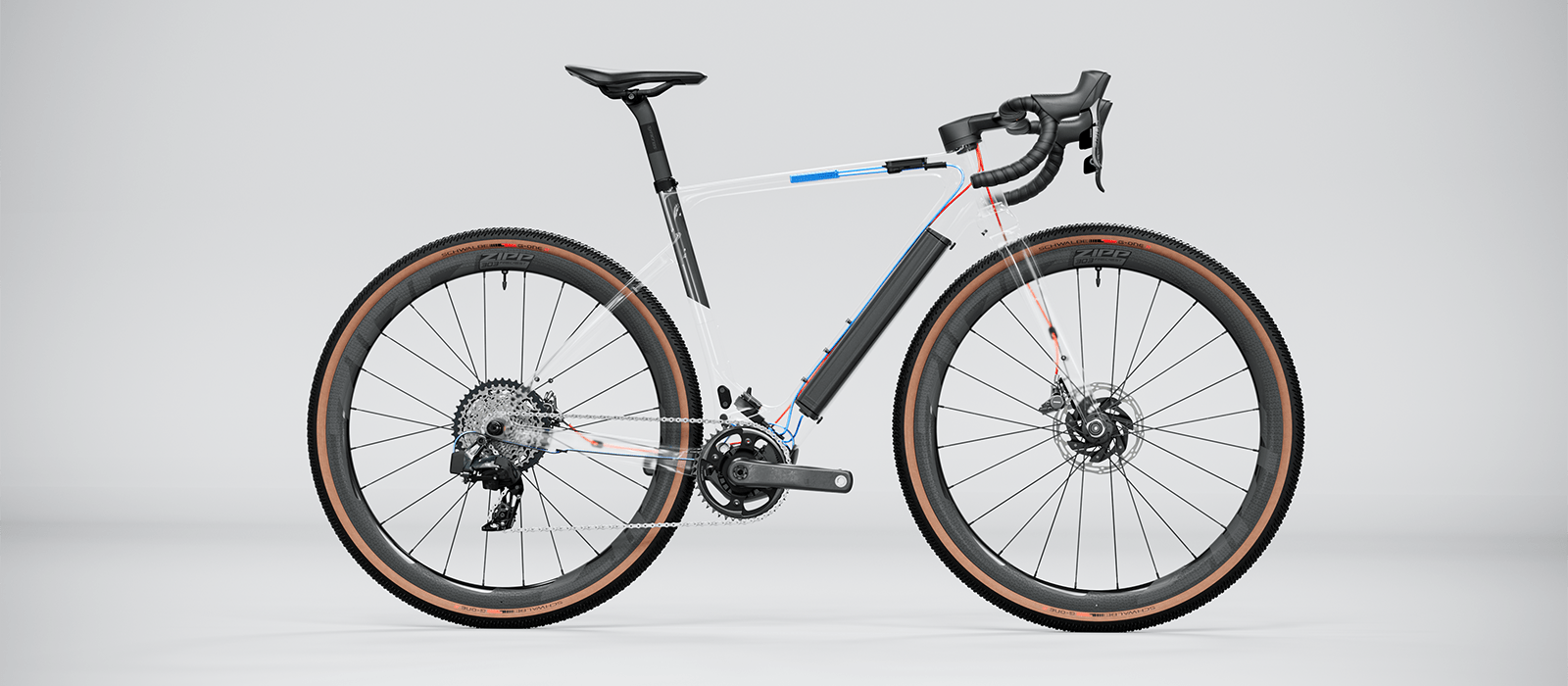
We have spent time on the TQ HPR50 in the Trek Fuel EXe and got along very well with it. It is smooth, exceptionally quiet, and has a well-proportioned natural feel in the way it supplements rider power output. We did find the 360 Wh battery to be on the small side, so the 160 Wh range extender seems like it will be almost a mandatory accessory for an adventure-focused eGravel bike — but again, we’ll have to wait and see just how much more range the Solace Gravel eRIDE’s Gravel use case can get over a Mountain application of the same system.
As a nice simplifying feature, the Solace Gravel eRIDE uses Scott’s “Smartbox” technology — a box in the top tube that pulls power out of the battery and connects to various accessories. The SRAM XPLR eTap AXS derailleurs on the eRIDE 20 and eRIDE 10 are plumbed directly into the “Smartbox”, negating the need for their own batteries — and making for one less battery to charge.
The Builds
Scott offers four builds for the Solace Gravel eRIDE, ranging in price from $6,000 to $10,000. All the builds come with the same TQ motor, internal battery, and display — but the eRIDE 10 build also includes the 160 Wh range extender. They all have 1x drivetrains, but if you’re looking for a 2x drivetrain, opting for the existing Road version of the Solace eRIDE will get you there, along with road-appropriate tires of course — on that note, Scott specs 50c tires on all the Gravel builds.
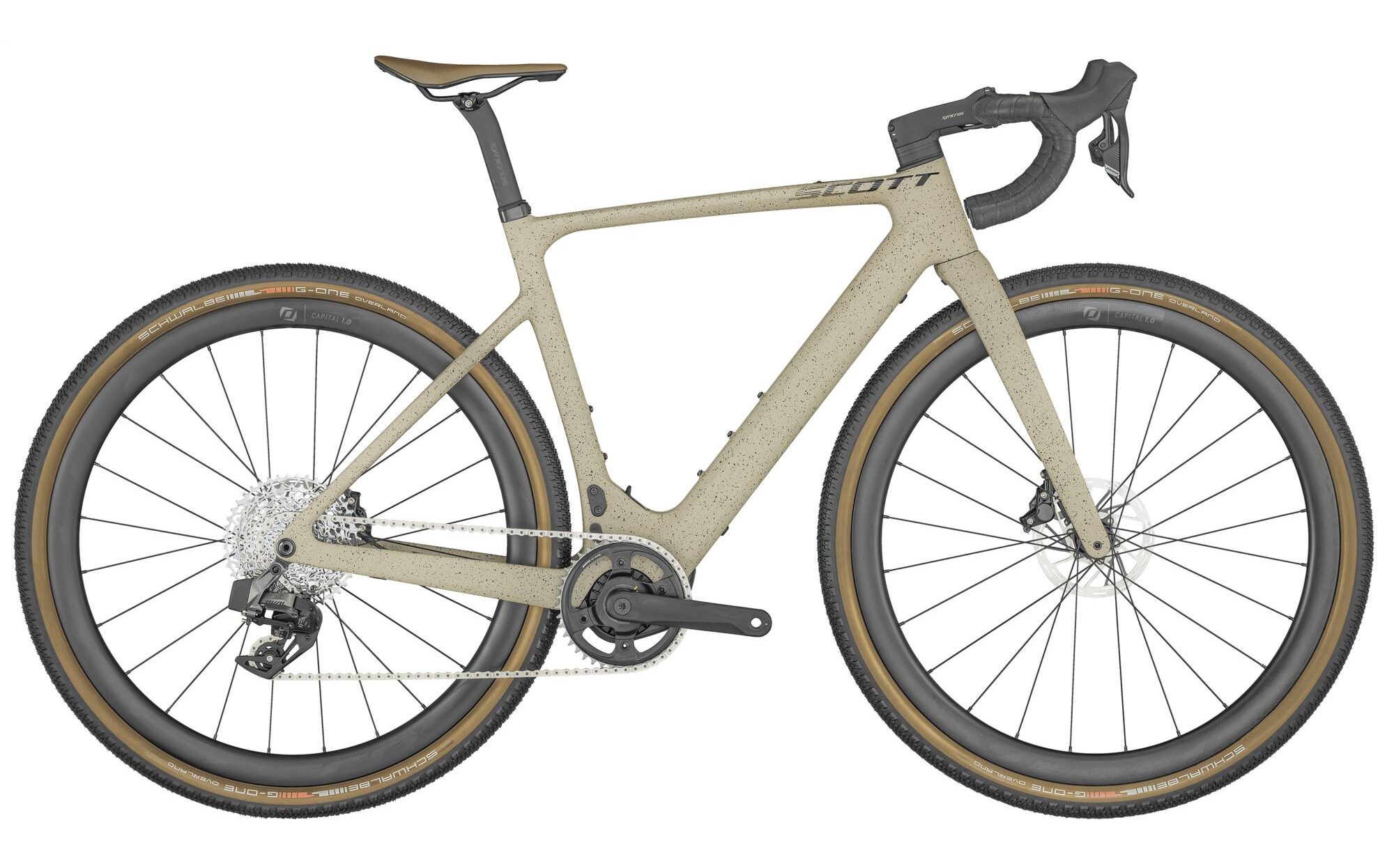
- Drivetrain: SRAM Rival 1 11-speed
- Motor: TQ HPR 50
- Battery: 360 Wh
- Fork: Solace Gravel eRIDE Disc HMX
- Brakes: SRAM Rival 1 w/ 160 mm rotors front and rear
- Wheels: Syncros Capital 2.0 25e Disc
- Seatpost: Syncros Duncan SL Aero
- Drivetrain: SRAM Rival 1 11-speed
- Motor: TQ HPR 50
- Battery: 360 Wh
- Fork: Solace Gravel eRIDE Disc HMX
- Brakes: SRAM Rival 1 w/ 160 mm rotors front and rear
- Wheels: Syncros Capital 2.0 25e Disc
- Seatpost: Syncros Duncan SL Aero
- Drivetrain: SRAM Rival XPLR eTAP AXS 12-speed
- Motor: TQ HPR 50
- Battery: 360 Wh
- Fork: Solace Gravel eRIDE Disc HMX
- Brakes: SRAM Rival eTap AXS HRD w/ 160 mm rotors front and rear
- Wheels: Syncros Capital 1.0 40e Disc
- Seatpost: Syncros Duncan SL Aero
- Drivetrain: SRAM Force XPLR eTap AXS 12-speed
- Motor: TQ HPR 50
- Battery: 360 Wh
- Fork: Solace Gravel eRIDE Disc HMX
- Brakes: SRAM Force eTap AXS HRD w/ 160 mm rotors front and rear
- Wheels: ZIPP 303 Firecrest carbon tubeless
- Seatpost: Syncros Duncan SL Aero
Some Questions / Things We’re Curious About
(1) Can the Solace eRide really switch between Road and Gravel duty seamlessly?
(2) Is a 360 Wh battery enough for an adventure-focused eGravel bike, or does that range extender become a likely add-on?
(3) Is eGravel the best application for the TQ HPR50 drive system?
Bottom Line (For Now)
If there’s only room for one drop bar bike in the fleet, then why not have one that can cover both Road and Gravel duty? On paper, the Solace looks like an interesting adventure eGravel bike, but adventure Gravel riding usually means high mileage — so we’re curious as to how things will play out as far as range, and how it will ride on those long days once it’s out of power. There are plenty of questions to address with the Solace, and we look forward to spending time sorting it all out
Flash Review: Our Initial On-Trail Impressions
BLISTER+ members and those who purchase our Digital Access Pass can check out the Flash Review below to read our initial on-trail impressions. Get our Digital Access Pass to view all our Flash Reviews and Deep Dives, or become a BLISTER+ member today to get access to that and a LOT more, including the best worldwide Outdoor Injury Insurance, exclusive deals and discounts on skis, personalized gear recommendations from us, and much more.
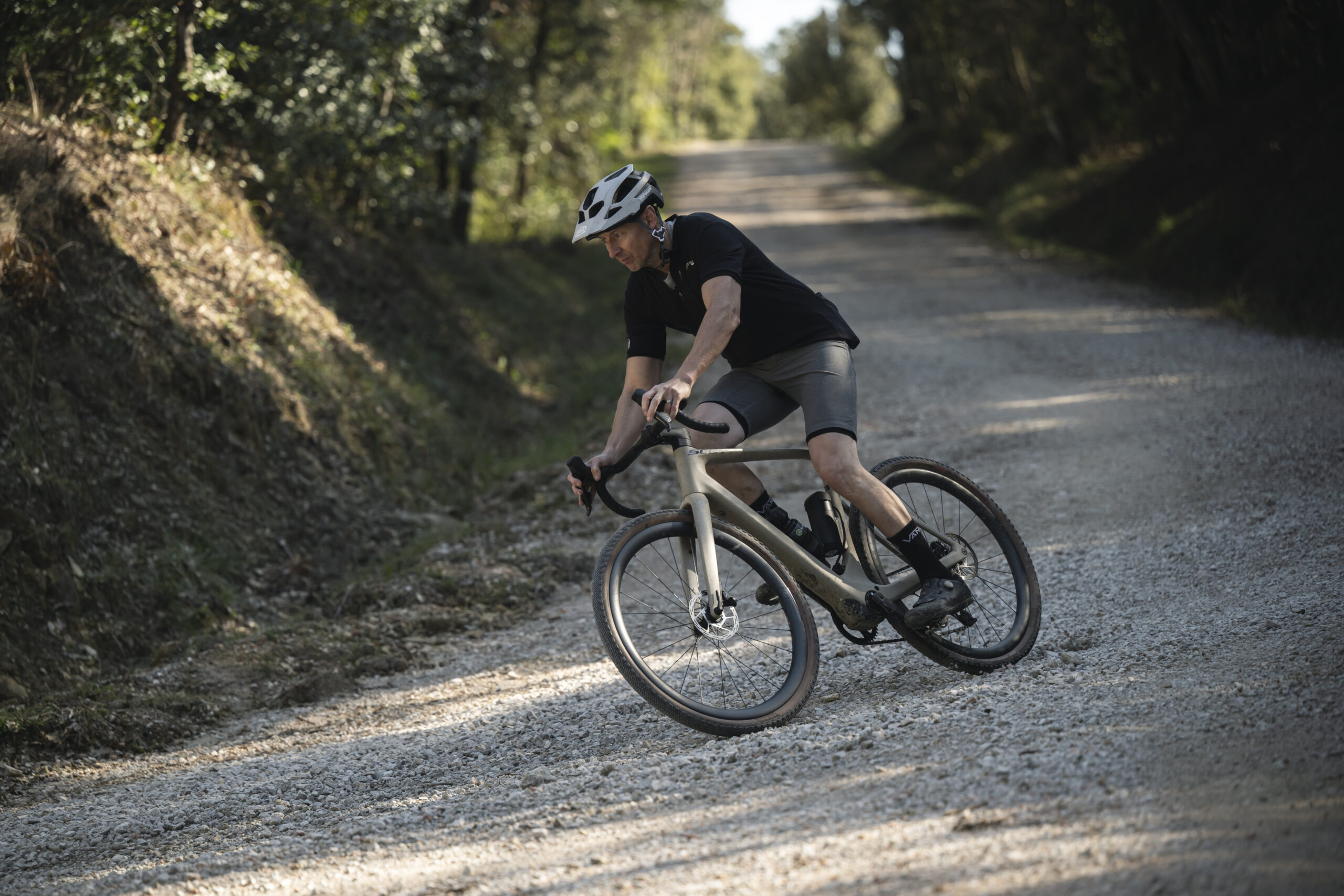
Flash Review — Scott Solace Gravel eRide
We’ve been riding the Scott Solace Gravel eRide on two different continents. Check out our impressions so far.
Blister’s Flash Reviews and Deep Dives are accessible to those who purchase one of our paid subscriptions
To get our comprehensive Deep Dives and our initial, unfiltered reports on new gear, become a member and receive many other services, deals, and discounts.
If you’re already an active member, please log in.
(If you’re already logged in and a member in good standing and seeing this message in error, please refresh this page in your browser.)

